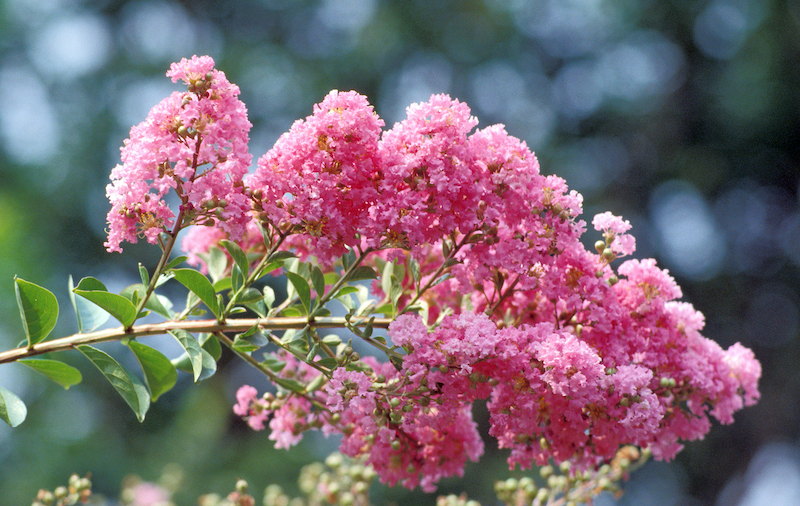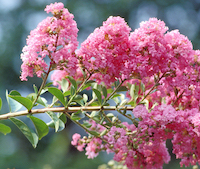Like people, crape myrtles come in all shapes and sizes. And thanks to horticulture breeding programs, today there are crape myrtles to fit any landscape space.
Unfortunately, crape myrtles are commonly butchered in the winter landscape in an attempt to make a large plant fit a small space. Thankfully, they tolerate all sorts of abuse. However, it doesn’t make sense to prune off 15 feet of growth each year and leave unsightly stubs when you could simply buy a plant that only grows to the desired height. With the wide variety of crape myrtle selections on the market today, there is no longer a need to fight your landscape during pruning season.
Most of the old crape myrtles common in your grandmother’s garden were the taller types that consistently grew 20 to 40 feet tall. In the olden days, flower color was more important than plant height because all crape myrtles grew tall. Then, 20 years ago, a crape myrtle breeding program at the National Arboretum introduced many smaller types and gave most of them Native American names like Cherokee, Tonto, Osage, Hopi and Pecos. The breeding programs have also resulted in better disease resistance, attractive fall color and exfoliating bark.
For large spaces, consider Natchez, a white cultivar that grows 20 to 30 feet tall. Other good selections in the large size category include Miami with dark pink flowers, Muskogee with light lavender flowers or Dynamite with bright red flowers.
For smaller spaces, selections growing 10 to 20 feet include Osage with clear-pink flowers, Yuma with lavender flowers and Cherokee with dark red flowers.
Pecos has medium-pink flowers, Acoma has white flowers and Tonto has red flowers – all are good selections in the 5 to 10 feet range. Excellent selections in the 3 to 5 feet range include Cherry Dazzle with red flowers, Snow Dazzle with white flowers, Dazzle Me Pink with bright pink flowers and Cordon Bleu with lavender-blue flowers.
If you need a smaller plant, consider the crape myrtlettes introduced by growers in Louisiana. Selections include Delta Blush with clear-pink blooms, which grows to 18 inches, Pixie White, which grows to 24 inches, or New Orleans, a purple selection that grows only 6 to 12 inches tall.
For more information on crape myrtles, check out the University of Georgia College of Agricultural and Environmental Sciences web-based publication at www.caes.uga.edu/Publications/pubDetail.cfm?pk_id=6861&pg=np&ct=crape%20myrtle&kt=&kid=&pid=.









